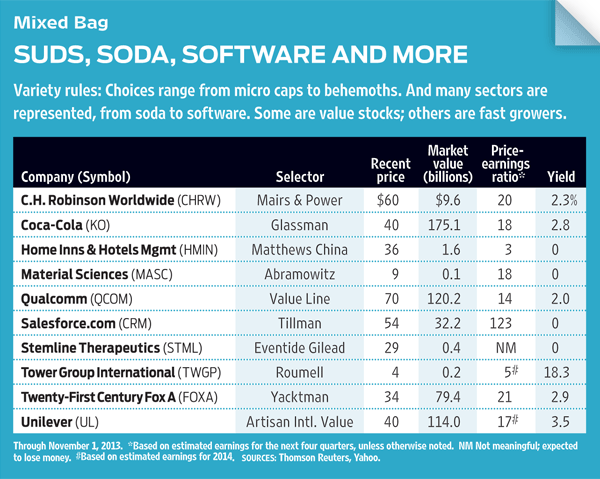Finding Safe Dividend StocksKiplinger
Post on: 14 Май, 2015 No Comment

Not all stocks that pay out dividends are created equal. Here’s how to evaluate them for growth and reliability.
Hunting for yield but fearful of getting burned? Here are four key questions that will help you stress-test a prospective dividend payer.
See Also: Great Dividend Stocks for 2014
When should you worry that the current yield is signaling high risk of a dividend cut? If a stock’s yield is three percentage points or more above its peer group, that’s a warning sign, said Charles Carlson, editor of the DRIP Investor, a newsletter geared toward dividend investors. It’s the old rule: ‘If it seems too good to be true, it probably is,’ he says. So be wary of chasing the highest yields.
2) What is the stock’s dividend payout ratio? This ratio is calculated by dividing the annualized dividend rate by a company’s annual earnings per share. In general, the lower the payout ratio, the more room a company has to raise its dividend.
What’s a normal payout ratio? That depends on the industry. Slow-growing electric utilities, for example, typically pay out the majority of earnings as dividends. Companies in fast-growing industries have lower payout ratios — say, 25% — because they are reinvesting heavily in the business. You can easily see a stock’s payout ratio and its history on the free portion of Morningstar’s Web site. Punch in the stock’s symbol, then click on key ratios.
Also look at free cash flow per share. Free cash flow measures the cash a company generates beyond what it needs to maintain its basic business. So declining or stagnant free cash flow may limit a company’s ability to boost dividends.
3) What is the recent history of dividend changes? Plenty of companies pay lip service to being generous with dividends. But actions speak louder than words. Look at the past few years of a company’s dividend payments (most firms list this on their investor-relations Web page). Has the pace of increase been rising or slowing?

Carlson advises long-term investors to choose accelerating growth over high current yield, for the inflation protection a rising dividend provides. I’d take the 2% yielder versus the 3% yielder if you’re going to get more growth in the dividend with the 2% yielder, he says.
4) Are new threats emerging that could dim a company’s profit and dividend growth? The 2008 financial crash was a black swan – a development that few people foresaw. But many threats to companies’ fortunes develop more gradually.
A major debate today is over the minimum wage and whether it should be raised significantly. That could help narrow the income-inequality gap in America — but it also could slam companies such as Wal-Mart Stores (WMT ), McDonald’s (MCD ) and other dividend-stock favorites. As a result, profits at many consumer-oriented companies could come under pressure, says Kelley Wright, managing editor of the newsletter Investment Quality Trends, which evaluates dividend stocks, and that could force them to slow the pace of dividend increases and perhaps even cut their payouts down the road.
With any stock, Wright says, watch for three warning signs of dividend trouble: marked deceleration in a company’s dividend increases; a rise in the payout ratio because the dividend keeps rising while earnings are slowing or falling; or, simply, a stagnating stock price.














